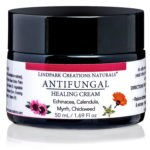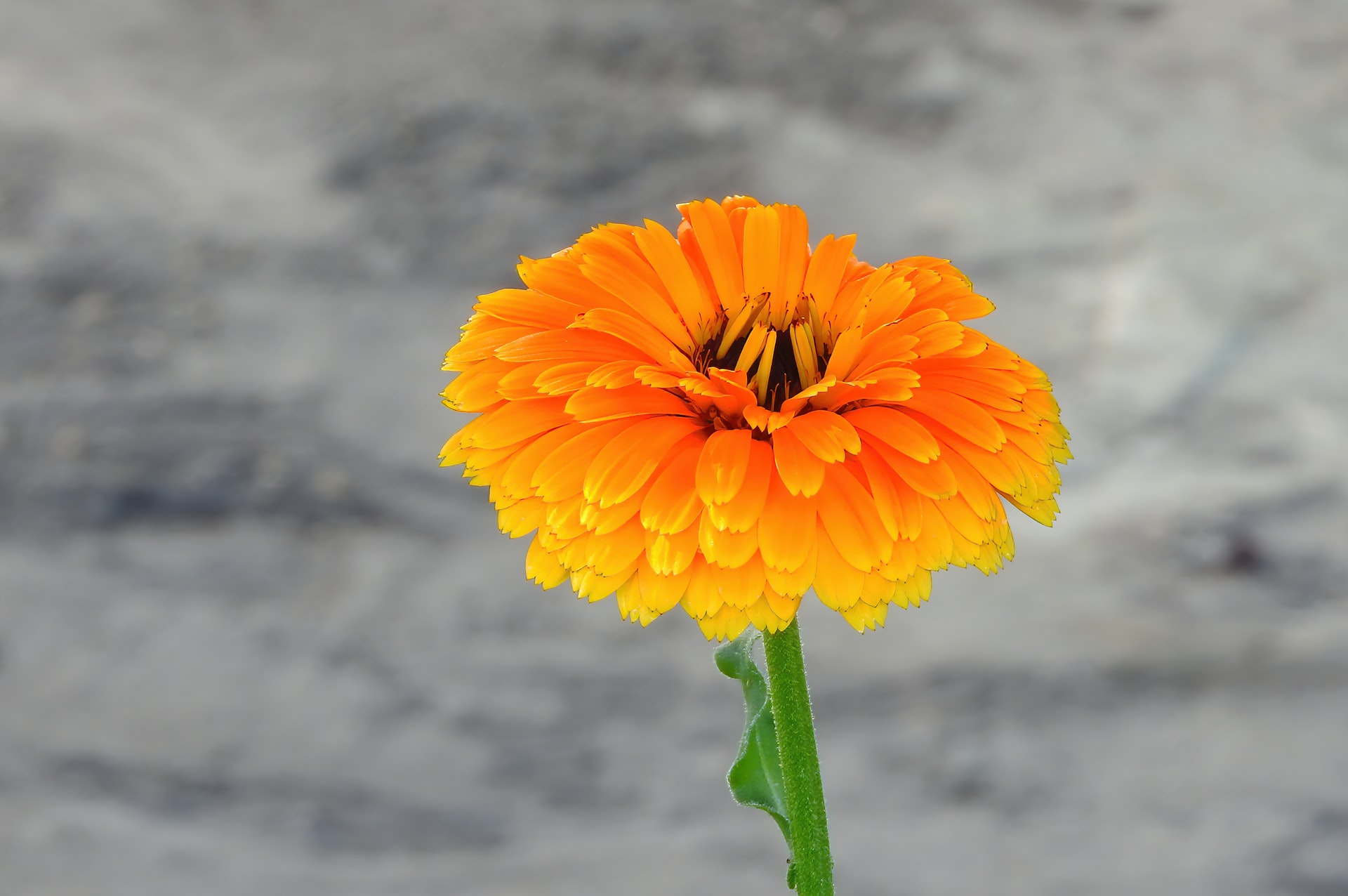The First Step to Candida-Free Skin
In my practice, I see many people with Candida issues.
It’s women of all ages, suffering from itchiness and rashes in the most delicate part of their body. Or those with fungal infections under the second most delicate part… their breasts.
Men have itchy red rashes around their groin, too. You could say that no one can see them… but the jock itch drives them nuts!
Teenagers who play footy or exercise often develop athlete’s foot or other foot infections.
Even babies… you know the so-called “cradle cap” on their scalp?
All of them have itchy, red, raised rashes. Sometimes patches come in circular shapes. The worst thing is that they are highly contagious and spread fast if left untreated.
But let’s not fall into alarmism. We know what’s causing them, so we can fight them!
These are all nasty fungi, which root cause can be attributed to Candida.
How do I know that? Well, because I’ve been successfully treating these conditions for the last 20 years. But especially because I’ve been there myself.
As an 18-year-old, I was trying to find the solution to my own skin condition. I was very embarrassed about it and didn’t know who to talk to.
I visited my first naturopath and soon after I was diagnosed with Candida.
Knowing what I know now makes sense. Like most Aussie kids, I grew up eating Vegemite on white toast virtually every day of my life! Plus the sugar and sweets that go along with it.
First, let me say that eating this way won’t automatically cause Candida overgrowth (I’ll clarify in a minute what I mean with the word “overgrowth”). But it definitely increases your risk.
That was certainly the case for me! We found out I had a yeast problem and was put on a strict anti-Candida diet for several years. My skin improved, but the rashes didn’t fully go away, as Candida was not the only issue for me. I had other more serious concerns, such as a high heavy metal load from vaccines, which in fact kept feeding the infection
As you can see, the problem is complex and there could be many contributing factors to Candida overgrowth. If you search online, you’ll get easily confused with all the many theories, opinions, real-life stories, programs, therapies, and prescription creams and drugs.

Photo by Lucas Freire on Unsplash
SPOILER ALERT: Prescription creams and drugs don’t usually work completely and often make the problem worse. To find out why, keep reading…
But first, let’s talk about how you can get out of the confusing maze that separates you from the solution to your problem
The issue is that some of the symptoms of patients suffering from Candida can be confused with other conditions.
That’s why it’s important to be candid about it.
But I get it, it’s difficult. You need to find someone you can trust, someone who doesn’t treat you like “a number”, or just tries to dismiss your embarrassment.
The shame is real and can be a contributing factor to your condition. In fact, stress can fuel Candida overgrowth.
When we’re under stress, our body increases the production of cortisol and glucose. With that, our sugar levels go through the roof, creating the ideal environment for the Candida to thrive.
If you consider that stress alters the delicate balance of our gut’s microbiome. It suppresses good bacteria and allows for bad bacteria and yeast to overgrow. It compromises our immune system… then you get the perfect storm.
So if while reading this, you’ve jotted down the note “Avoid Stress”, give yourself a gold star. But as I often write about, reducing stress is easier said than done.
The environment and the people that surround us play a major role in it. So to fight Candida you want to find someone that makes you feel at ease.
Removing the taboo around Candida is a key component in finding the solution to the problem.
Finding someone with the right knowledge will also help you diagnose your specific case, and save you the stress, time and money that most people incur when they’re desperate to find a solution.
Many of my patients have been there and, again… I’ve been there myself!

Photo by Priscilla Du Preezon on Unsplash
Now you might have noticed I’ve not just talked about Candida, but mainly about overgrowth. Why?
What is Candida Overgrowth?
Candida is a common organism in the human microflora. Its most common form (Candida Albicans) is present in around 70% of people’s gut. That’s over 5.5 billion worldwide.
So Candida is not something to fight per se. The issue is when the Candida yeast and other bacteria multiply excessively and surpass certain levels… hence the “overgrowth” that I was talking about.
When this happens, people experience inflammation, weakening of their immune system, irritation and damage of their skin in localised areas of their body. These are the areas we talked about at the beginning of the article.
Why does Candida manifest in certain areas of the body?
Think about it this way. Candida is a fungus, and fungi thrive in hot and humid environments. Now think about the areas of the body with these conditions where the air cannot freely circulate:
- Under breast – especially in women with large breasts ✔
- Feet trapped in socks and training shoes ✔
- Genitals covered by underwear and clothes ✔
- Babies’ bottoms when nappies are left for too long ✔
Makes sense, right?
Now, this doesn’t mean that Candida manifests only in humid areas – people’s scalps are the perfect example – but this type of environment creates the perfect conditions for the yeast to overgrow.
You might wonder: if Candida overgrowth happens in the gut, what has it got to do with the skin?
I know you should never answer a question with a question, but bear with me for a minute.
Do you know that skin cells and cells in our gut lining come from the same cell type? And that they develop at the same time in embryos?
Why should you care?
Well, science teaches us that cells with the same origin behave in similar ways. So if we want to treat skin conditions we need to look at the health of the cells in the digestive system as well.
Pretty cool, eh?
Then, if you consider that the body is a complex machine with interconnected organs that influence each other reciprocally… you get the full answer.

Photo by NASA on Unsplash
What causes Candida?
Antibiotics are often responsible for Candida overgrowth.
It’s common for people who take antibiotics to have poor digestion. That’s why they can throw your gut flora out of balance and create the perfect conditions for the yeast to multiply.
Medications such as asthma inhalers, steroid medications, chemotherapy, as well as birth control pills, pregnancy and menstruation might also contribute to yeast infection.
Eating sugar, too many carbohydrates and refined food can also trigger yeast overgrowth. This type of food feeds the Candida and creates the conditions for it to turn into a nasty fungus.
Lifestyle factors can also contribute to it. Yes, the usual suspects such as alcohol, smoking, stress, are at the top of the list.
Obesity, immune-suppressed disease states (diabetes, HIV, Cushing’s disease, etc.) also increase the risk of Candidiasis.
What are the symptoms?
With Candidiasis you can experience:
- Fever, general feeling of discomfort, illness, or uneasiness.
- Thrush, which manifests with creamy white patches over the mouth, throat and other parts of the body.
- Perlèche: painful, macerated fissures at the corners of the mouth.
- Erythematous skin lesions: most commonly in the groin (jock itch), between fingers and toes, under the female breast, in the armpits.
- Diaper (nappy) rash in babies’ bottoms.
- Genito-urinary candidiasis:
- Vulvovaginal candidiasis (VVC) – Erythematous on vagina and labia and a thick, curd-like discharge.
- Candida balanitis – Penile pruritus and whitish patches on the penis.
- Candida cystitis – Many patients are asymptomatic, but bladder invasion may cause frequency, urgency, dysuria, hematuria, and suprapubic pain
- Asymptomatic candiduria – Most catheterised patients with persistent candiduria are asymptomatic
- Ascending pyelonephritis: flank pain, abdominal cramps, nausea, vomiting, fever, chills and hematuria
- Invasive yeast infection (in severely immunocompromised patients): large abscesses and diffuse micro-abscesses (disseminated candidiasis), erosive lesions of the oesophagus and stomach (gastrointestinal candidiasis), urinary tract infection (urinary tract candidiasis)

Photo by Michael Prewett on Unsplash
How can you find out if you have Candida?
I’ve been candid in sharing my personal story with you.
With the same candour, I want to address the confusion around the diagnosis and treatment of Candida. It’s a long topic, which we won’t be able to discuss here, but let me just share with you my experience as Naturopath with patients all across Australia:
- Candida overgrowth is a thing. Whilst some doctors disregard it, calling out the lack of scientific research around it, many practitioners find evidence of the direct correlation between Candida and skin conditions. Once you remove the causes of Candida, the skin conditions disappear. If that happens over and over under the same circumstances, can we call it a coincidence?
- Testing for Candida overgrowth is possible. Candida is the diagnosis of a fungal infection, and will come up in a blood test as positive. Also, a microbiome stool test can show elevated several yeast infections including specifically Candida albicans levels.
- Natural therapies are effective. As shown below, prescription drugs rarely work, and sometimes can make the problem worse. On the other hand, natural remedies have worked for me and my patients. Results, no side effects and overall wellbeing of my patients – that’s all I care about!
- So the best place to start is often with a blood test, often together with a stool test. They will tell me if you have overgrowth and to what degree, so that I can formulate the best treatment for you.
What are the best treatments?
Candida can be difficult to treat, as it forms a biofilm, which protects the fungus from the body’s natural immune response. Also, the walls of the fungal cells contain a type of protein (mannose glycoprotein) that is immunosuppressive and can reduce the effect of our immune system. These fungi are ugly, but certainly not stupid!
Topical antifungals are often the first line of pharmaceutical treatment. They are over-the-counter antifungal powders, lotions, creams, sprays or shampoos that contain miconazole, clotrimazole, or similar ingredients.
When topical antifungals don’t work, people resort to prescription medications. Unfortunately, these may cause severe side effects and may also interact adversely with other medications, such as cancer medications, antihistamines and antibiotics.
The other thing to consider is that prolonged treatment with antifungal medications (such as Nystatins) can cause Candida to adapt and make it resistant to treatment. In these cases, creams and medications can cause liver problems and a worsening of the rashes.
Many patients also come to me feeling very frustrated because the antibiotic or antifungal creams make the rashes spread, instead of stopping them.
Based on the explanation above, you can understand why. Since Candida is such a tough enemy, the only way to tackle the problem is with an inside-out approach. We need to address the root cause, re-establishing the gut natural equilibrium with diet and lifestyle changes, while acting topically with the best antifungal herbal creams.
Recommended diet
- Enjoy a whole food diet based on fresh fruit, vegetables, herbal teas and garlic. Yes you heard right, fruit!
- Sugar, sweets, alcohol, chocolate, soft drinks, packaged fruit juices should be avoided, as sugar encourages dysbiosis and overgrowth.
- High-carbohydrate foods such as grains should be consumed sparingly or avoided initially.
- Avoiding yeasts and fermented foods is helpful. These include bread, vinegar, pickles, alcohol, Vegemite, mushrooms, cheese, processed meats (salami etc), peanuts and peanut butter and leftovers.
- Unsweetened natural yoghurt with live lactobacillus can be beneficial.

Photo by Josh Millgate on Unsplash
Lifestyle changes
-
- Prioritise sleep and rest to support immune function
- Avoid or minimise stress as much as possible, as it reduces immune activity
- Avoid synthetic clothing and underwear, as this may increase the likelihood of vaginal thrush developing
- If sexually active, treating both partners may be beneficial to avoid reinfection
- When taking antibiotics, supplement with Lactobacillus acidophilus; avoid broad-spectrum antibiotics
- Practice good hygiene, including oral hygiene and thorough cleansing of genital areas; wear cotton underwear
- Women should avoid vaginal deodorants and bubble baths
- Wear rubber gloves if the occupation (e.g. hairdressing or nursing) requires keeping hands in water; keep the skin dry
Natural Candida Treatments
As a practitioner, I have found it very hard to find products that effectively treat Candida without side effects. That’s why I developed my herbal tincture and herbal cream, which I have evolved and perfected over many years of practice with patients.
AntiFungal Liquid Herbal Tincture
This antiparasitic and antifungal tincture contains herbal extracts that are antifungal and antimicrobial. It fights Candida from the inside out!
When using herbal medicine, you are receiving the ‘life force’ of the whole plant… including all the vitamins, minerals, amino acids and fatty acids that the plant offers.
Drugs, on the other hand, “isolate” only one chemical part of the plant, as in the case of “Curcumin” derived from Turmeric. Similarly, phytochemicals have “synthetic chemical adjuncts” added to them, which can often cause adverse reactions.
Herbal medicine is synergistic with your body and easily absorbed and utilised, which explains why it’s so effective.
My antifungal healing cream contains powerful botanical herbs that fight yeast and fungal infections on the skin. 
It helps stop itch, swelling and inflammation, whilst healing the skin.
It’s effective against several types of Candida and related symptoms, such as:
-
-
-
-
- Ringworm
- Thrush / Candida
- Tinea
- Impetigo
- Cradle cap
- Toenail and fingernail infections
- Jock itch
- Vaginal infections and itchiness
- Yeast infections
-
-
-
As I’ve already mentioned, to fight and heal from Candida overgrowth, a complete inside-out approach is required. However, if you need some relief from the pain and discomfort, you can apply my Antifungal Healing Cream.
Antifungal Healing Cream
Use this Special blog Code below to get $5 off
CODE: 5$OFFLPC

Photo by Oksana Gogu on Unsplash
Takeaways
The journey to overcome Candida overgrowth can be long and testing. But the good news is that you can win the battle!
To recap, the journey to Candida-free skin usually looks like this:
-
-
-
- Overcome the shame and talk candidly about your skin issue with the Practitioner you trust
- Test – for the correct diagnosis
- Modify your diet and lifestyle and start treatment with natural products
- Test along the way, while experiencing noticeable improvements
- Adjust diet and treatment by reintroducing food
- Enjoy Candida-free skin!
-
-
And if the itchiness is driving you crazy, I get it!
Start with my Antifungal Healing Cream. Most of my patients see improvements after four or five days of applying the cream.
Order Here: Antifungal Healing Cream
SPECIAL BLOG CODE: 5$OFFLPC

